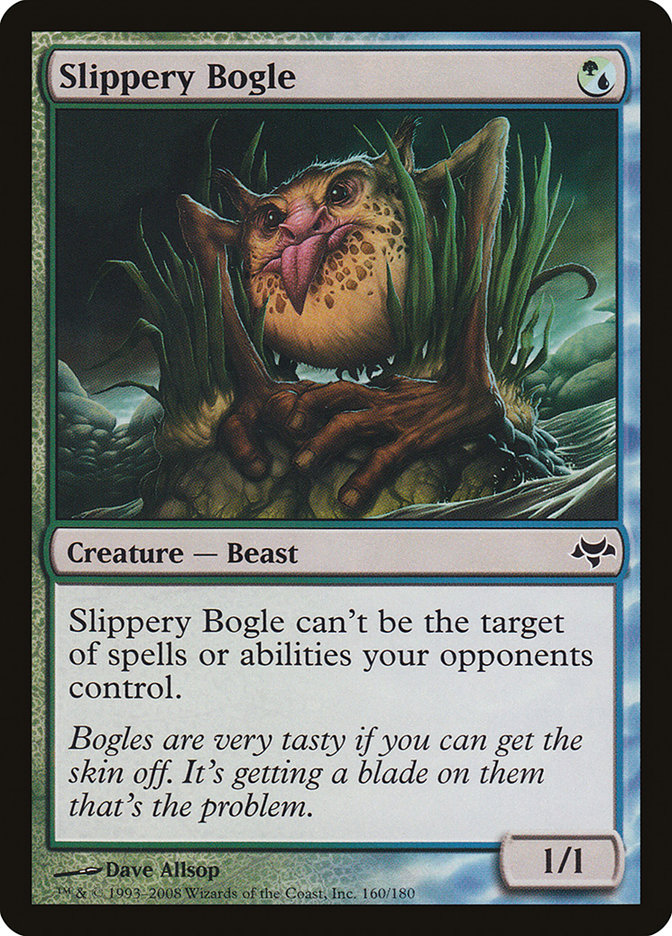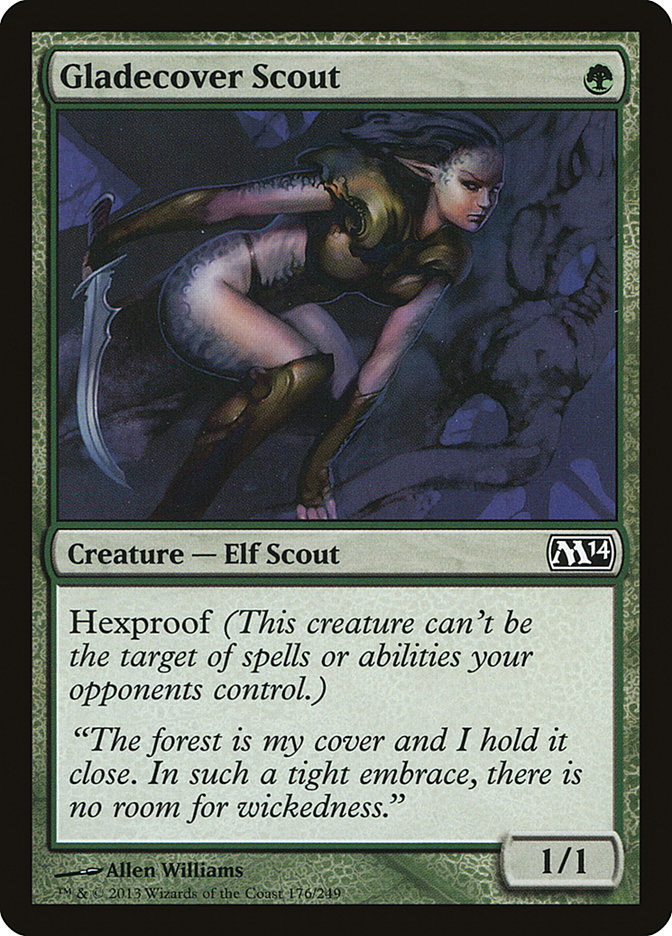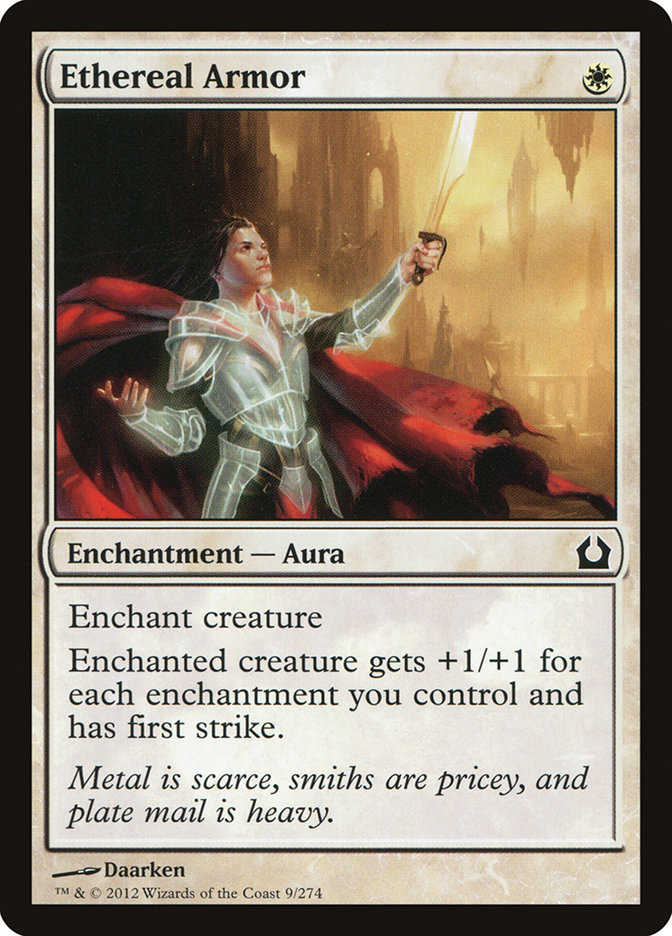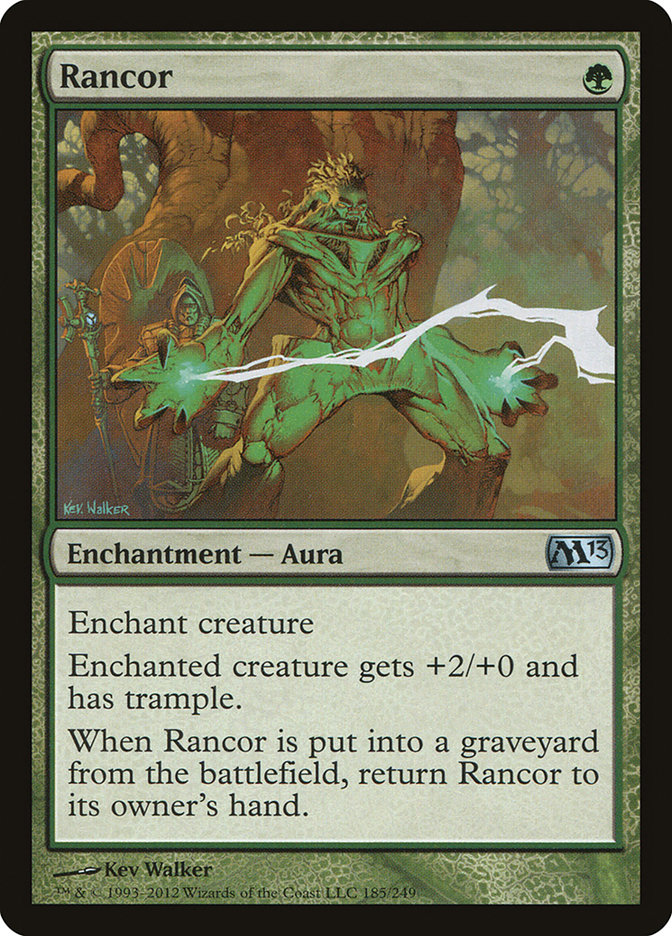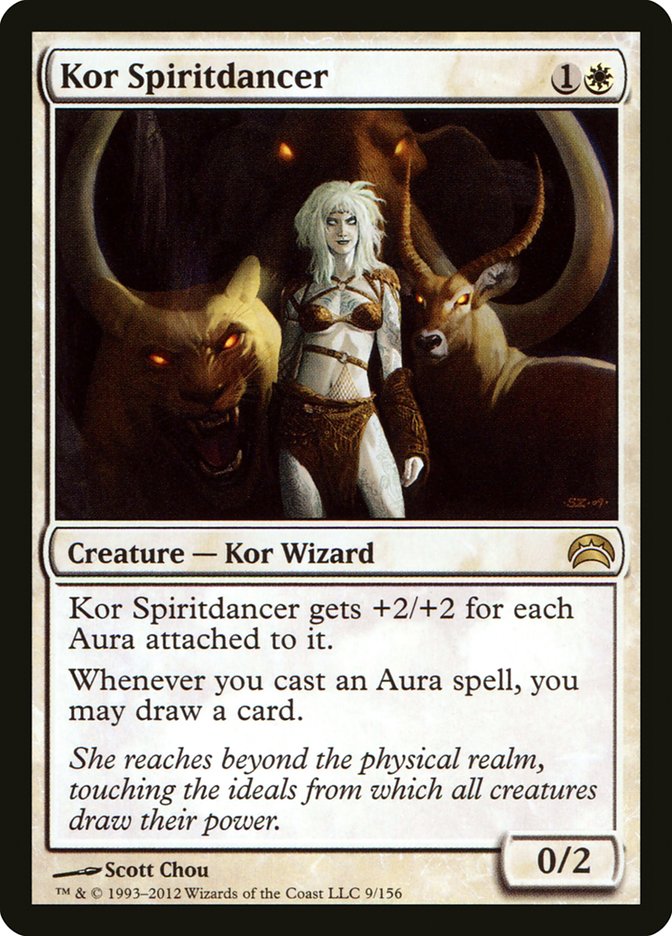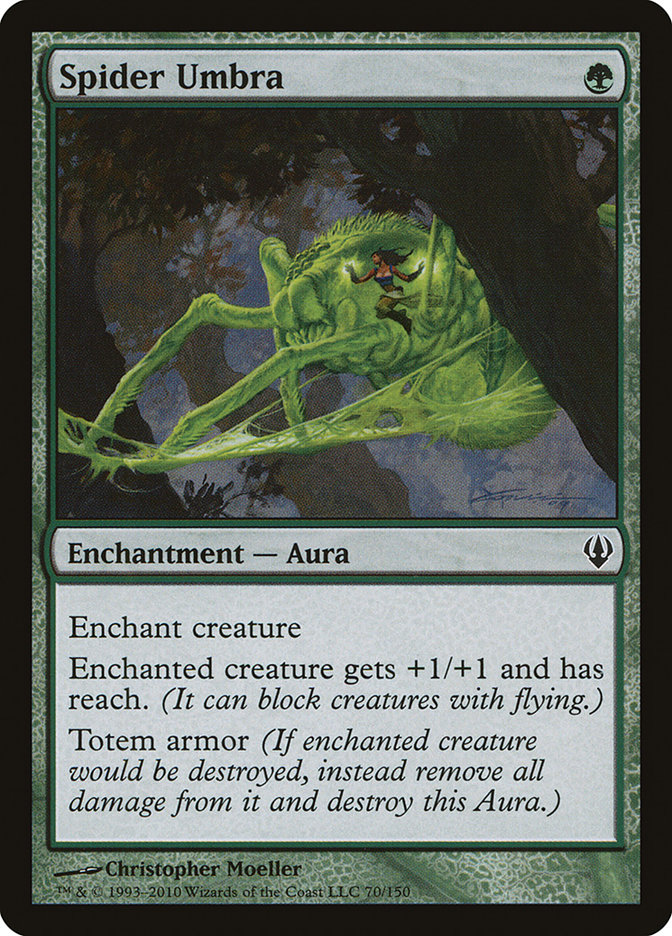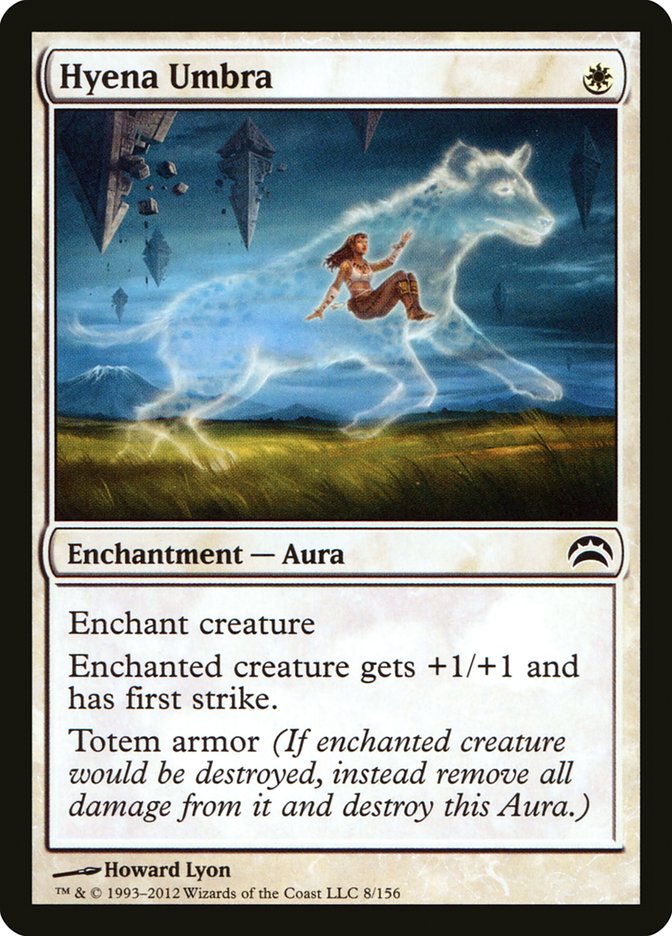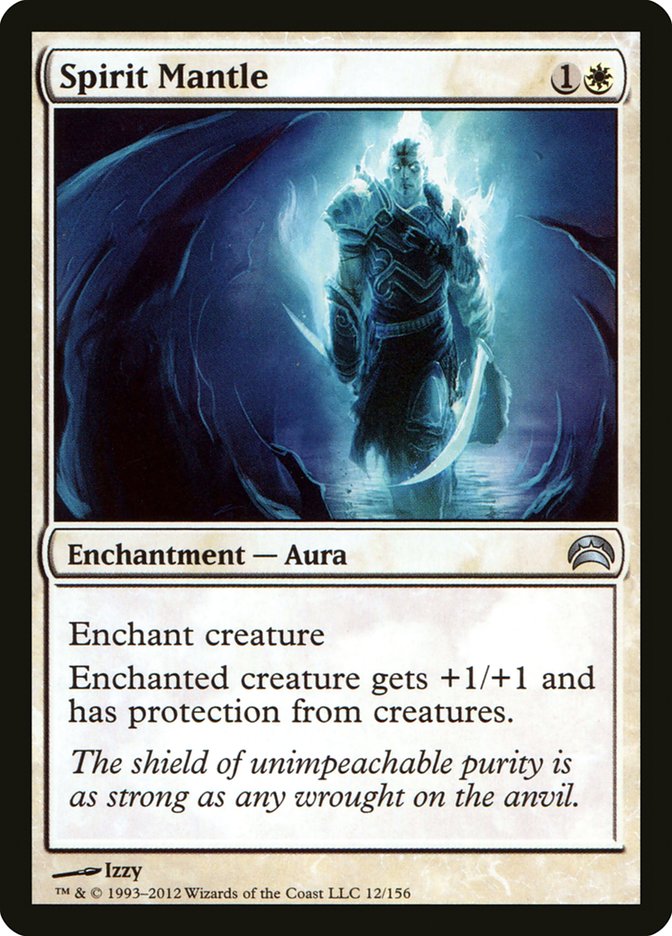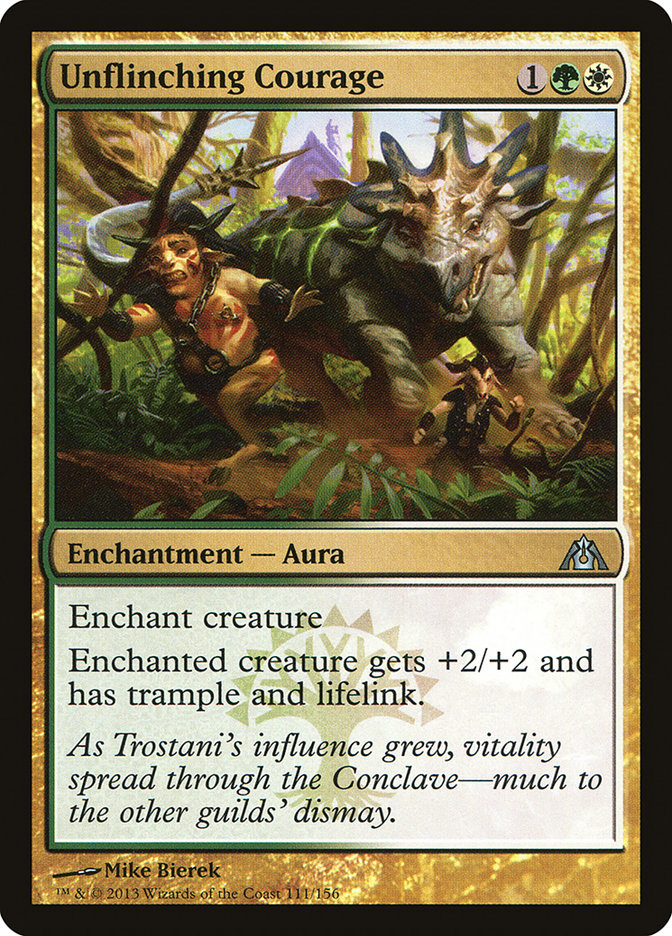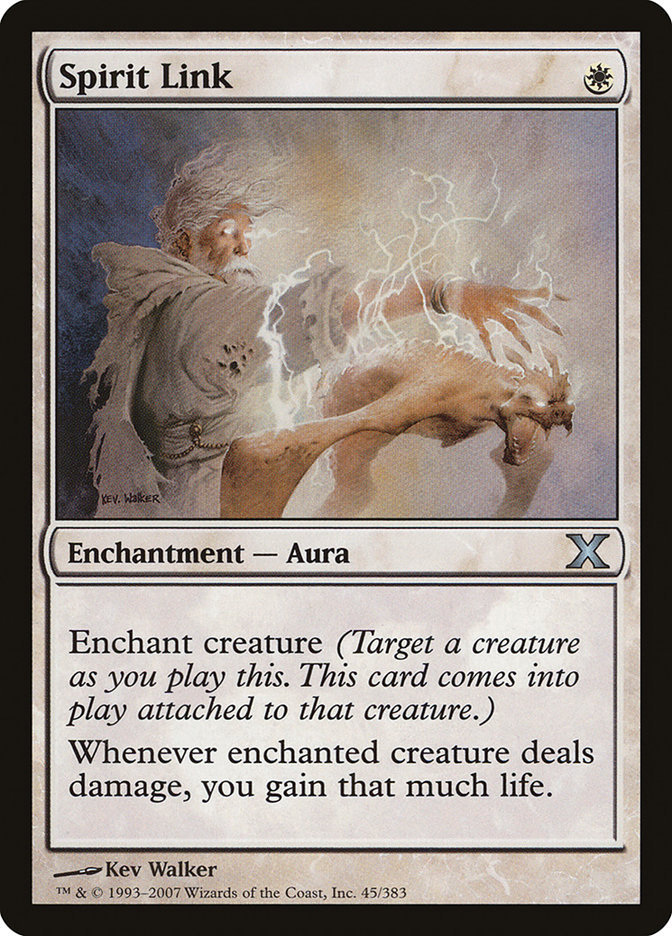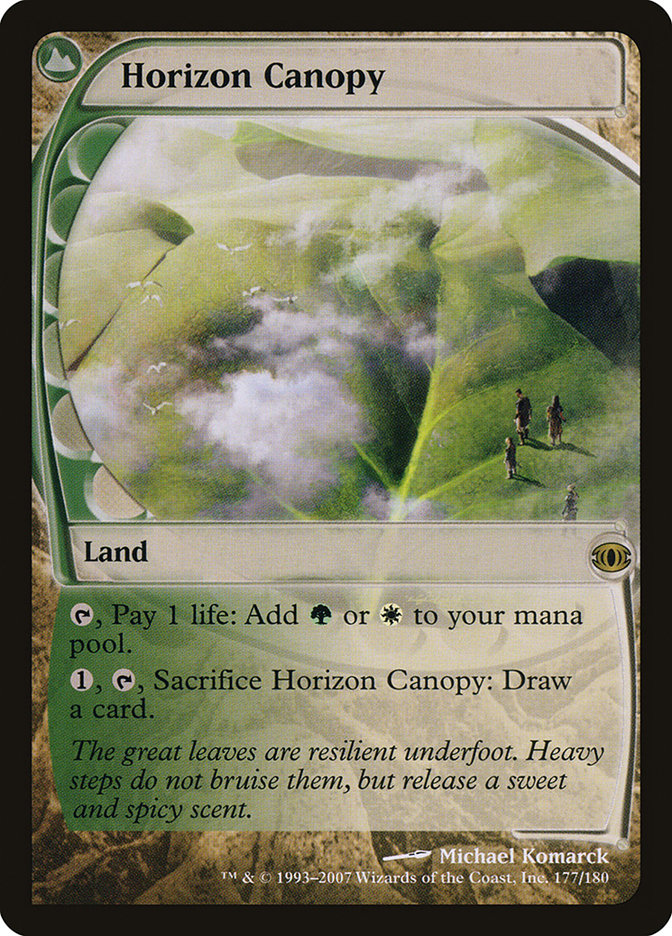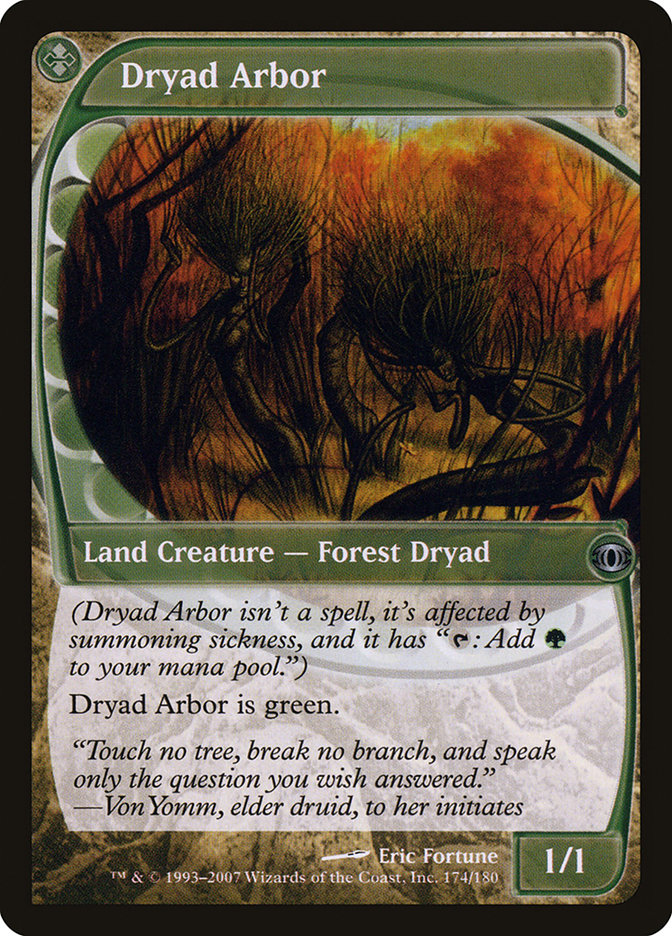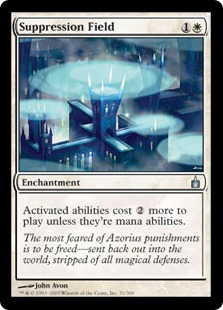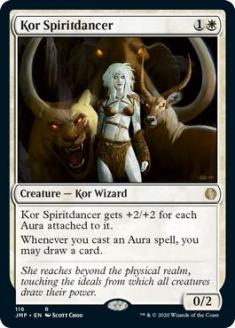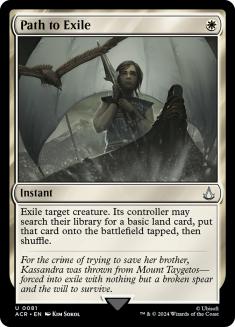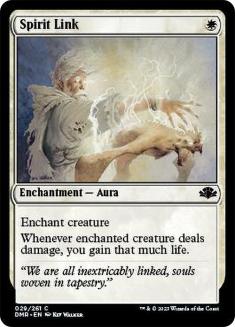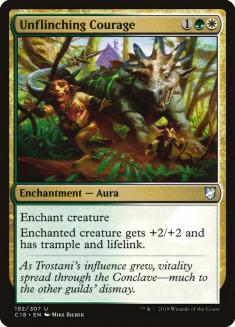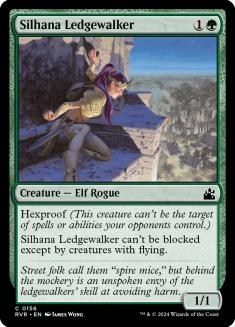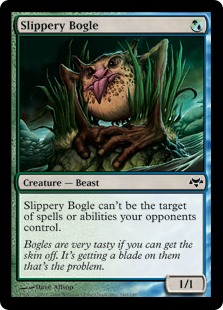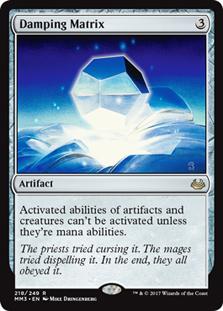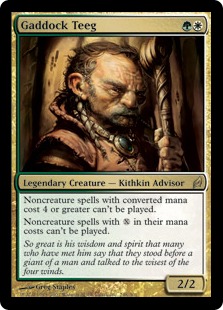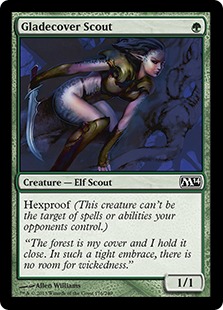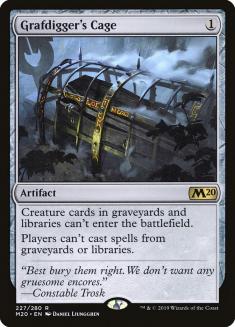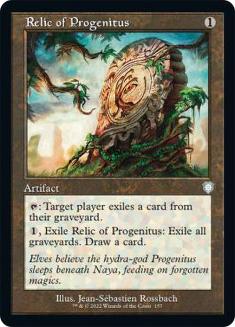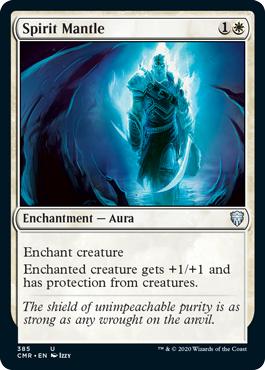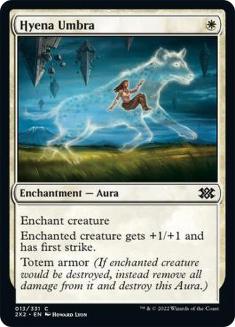The weekend before last at Pro Tour Born of the Gods in Valencia, Spain, I piloted Auras (aka Bogles) to a respectable 7-3 record during the Constructed rounds of the event. While I finished with a 9-7 record overall, losing my $1000 match in round 16 and finishing in 108th place, the deck performed well, and my intention is to explode all the information about it that I can into this article just in time for Grand Prix Richmond tomorrow.
The List
Let’s start with the list and a breakdown of a few of my card choices.
Creatures (12)
Lands (21)
Spells (27)

The Core
These twenty cards comprise the ones that I feel cannot be cut from the maindeck. For anyone unfamiliar with how Auras functions, you simply start with one of the eight hexproof creatures on turn 1 and then spend turns 2 through 4 affixing Auras in whatever order creates the biggest, meanest, most hateful hexproof creature imaginable. Interested in what the best case scenario is for creating a giant Bogle? Try something like this:
Turn 1: G/W land, Slippery Bogle.
Turn 2: Land, Rancor, Ethereal Armor, attack for five.
Turn 3: Land, Ethereal Armor, more enchantments.
Depending on the combination of enchantments and the amount of damage your opponent has done to themselves through fetch and shock lands, Auras does have the ability to kill on turn 3, but not with any real regularity. Most games against fair decks feel as if they are over on the third turn because the Auras deck presents a lethal damage source that is incredibly difficult to remove, but in actuality the final blow isn’t dealt until combat on the fourth turn.
The Additions
These fourteen cards are what I feel best complement the core of the deck.
4 Kor Spiritdancer
The explosive power of Kor Spiritdancer can’t be understated, and it shines in many of Auras worst matchups. Many combo decks and some fair decks like Melira Pod have a very difficult time removing it, and in the instances when you are allowed to untap, it is very easy to turn even a single enchantment into lethal damage. Even in matchups where the opponent has removal available, holding Kor Spiritdancer until a turn where you can cast it and then immediately cantrip off an enchantment can be the difference between winning and losing.
4 Spider Umbra, 3 Hyena Umbra
The Umbras play a valuable role in dealing with damage-based sweepers like Anger of the Gods and Firespout while also providing the best ratio of power/toughness boost to mana cost among the Auras available in Modern. Reach and first strike also come in quite handy in situations where the Auras deck may be forced to play defense until a lifelink Aura arrives. Because Ethereal Armor and Daybreak Coronet also provide first strike, Hyena Umbra is not as important, and one copy can be shaved to make room in the maindeck.
3 Spirit Mantle
The subtle applications of Spirit Mantle come up quite frequently, and while there are some who feel that the card is not worthy of inclusion, I would like to make mention of the following things:
- Spirit Mantle is absolutely the most important card in the Auras mirror match period.
- The effect Spirit Mantle generates is better than trample.
- Many decks like to fight Auras with cards like Engineered Explosives and Chalice of the Void, which makes diversified mana costs among Auras very important, especially when it comes time to keep a Daybreak Coronet attached to your creature.
The Flex Slots
2 Unflinching Courage, 1 Spirit Link
Going into the Pro Tour, Zoo was expected to be a large part of the field due to the recent unbanning of Wild Nacatl. While there are times that Zoo can feel like a bye for Auras (and in truth that is one of the reasons to play the deck), that assessment is very dependent upon Auras’ ability to draw an Aura that gives lifelink in the first ten to twelve cards of the game. Given a 60-card deck, I feel that anyone not playing at least seven Auras that provide lifelink is giving up significant numbers in a matchup that should be very favorable.
Unflinching Courage is custom built for the task of attacking profitably, and the stat boost of +2/+2, lifelink, and trample represents a powerful single card impact comparable only to Daybreak Coronet.
Spirit Link gets the award for cutest card in the deck. Its ability to gain life above and beyond regular lifelink as well as sometimes being a Defang for the opponent’s creature is just too adorable not to include. Just think, you get all that for the low cost of one mana.
2 Path to Exile
Path to Exile is an absolute workhorse in the Modern format and is a live draw against every single matchup. Here is a rundown of some important things Path to Exile can do for Auras:
- Disrupt Melira Pod’s combo.
- Disrupt Splinter Twin’s combo.
- Gain three to six life against Zoo and Affinity.
- Disrupt Goblin Electromancer by Path to Exileing during the draw step.
- Disrupt Infect.
- Disrupt Goryo’s Vengeance if they have Griselbrand.
- Disrupt Amulet of Vigor’s combo.
- Fetch out your basic land to accelerate into Unflinching Courage or expensive Kor Spiritdancer plays.
The Mana Base
2 Dryad Arbor, 4 Horizon Canopy, 3 Misty Rainforest, 4 Razorverge Thicket, 3 Temple Garden, 4 Verdant Catacombs, 1 Snow-Covered Forest
Auras has access to one of the best and most consistent mana bases available in Modern. Aside from the G/W dual inclusions, having the ability to cycle through lands with Horizon Canopy and fetch out a creature in Dryad Arbor provides the kind of value that any experienced mage should love. In particular, fetching out a Dryad Arbor is a play so reliable that the sideboarding plan for many combo matchups like Storm, Splinter Twin, and Melira Pod relies heavily on keeping hands where Dryad Arbor is the only available creature to enchant. For this reason and also the presence of cards like Unflinching Courage, I recommend the second Dryad Arbor as a 21st land. Also, if Liliana of the Veil increases in popularity again as many expect, you won’t be sorry.
Disclaimer: Yes, the Snow-Covered Forest was a troll. Although you could call it a Gelid Shackles bluff.
The Sideboard
1 Damping Matrix, 2 Gaddock Teeg, 3 Grafdigger’s Cage, 3 Rest in Peace, 1 Silhana Ledgewalker, 4 Suppression Field, 1 Unflinching Courage
Since Auras is technically a turn 4 combo deck, it can find itself in situations where other combo decks are capable of ignoring it while comboing off slightly faster. This is one of the few axes of interaction that exist in the Modern format for dealing with Auras and as such is the main focus of the sideboard. Silhana Ledgewalker and Unflinching Courage come in for matchups where you just want to have a higher chance of finding an opening hand with a hexproof creature or a lifelink effect. The basic plan for combo matchups is to cut down on the number of cards that do nothing in your deck while bringing in all of the relevant prison cards for that particular pairing, lock the opponent out of the first few turns of the game, and then stick a creature and win at your leisure.
Pro Tour Results
Take a look at the breakdown of the most popular archetypes on day 1 of Pro Tour Born of the Gods that Wizards of the Coast compiled:
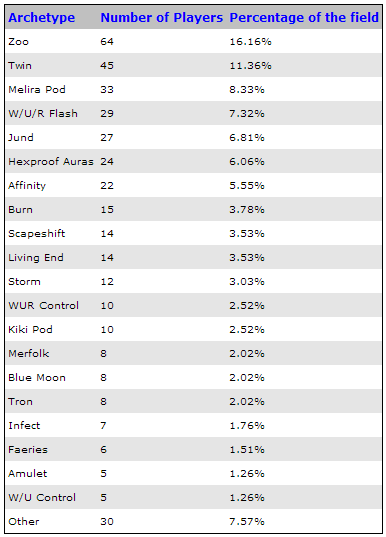
I would classify the following matchups as favorable for Auras in both game 1 and sideboarded games:
Zoo
U/W/R Flash
Affinity
Burn
U/W/R Control
Merfolk
Blue Moon
Faeries
U/W Control
This means that 42.14% of potential matchups were favorable for Auras heading into day 1.
I would classify the following matchups as game 1 unfavorable but winnable and sideboarded games favorable:
Twin
Melira Pod
Storm
Kiki Pod
G/R Tron
Amulet
This means that 28.58% of potential matchups were slightly favorable for Auras heading into day 1.
I would classify the following matchups as unfavorable in both game 1 and sideboarded games:
Jund
Living End
Scapeshift
Infect
This means that 15.63% of potential matchups were unfavorable for Auras heading into day 1.
How about that statistical analysis, folks?
What’s that you say? Need more data? Let’s use the very scientific “Corvese Good Bad Scale”:
Good Matchups: 70.72% of the field
Bad Matchups: 15.63% of the field
Other (mirror, etc.): 13.65% of the field
Phew. I’m impressed with myself. I know you are too.
But Harry, What About GP Richmond?
Having seen some other Auras lists in the wake of the Pro Tour as well as tried to predict how the format might shift in preparation for Richmond tomorrow, I would recommend the following list for anyone looking to cast Slippery Bogle.
Creatures (12)
Lands (21)
Spells (27)

The biggest change comes to the maindeck in the form of one Spirit Link and two Path to Exile being swapped for three Suppression Field. This change comes as a result of Zoo being both less popular and less successful than anticipated. Also, Suppression Field is high octane gasoline and will help out with quite a few of those “game 1 unfavorable” situations that arise. The only other change is swapping two Rest in Peace for two Relic of Progenitus, which is something specific for the Living End matchup.
Teach Me How To SideBogle
Here’s a handy sideboarding guide if you’re looking to play Auras at Grand Prix Richmond.
Zoo
Out:
In:
Kor Spiritdancer makes for a nice shave because while it can be useful to make three- and four-mana plays with her to cantrip into lifelink Auras, you never want to draw a second copy.
Splinter Twin
Out:
In:
Gaddock Teeg comes in to help fight the actual card Splinter Twin, which makes a Kiki-Jiki, Mirror Breaker necessary for comboing. Remember when shaving Slippery Bogle and relying more on Dryad Arbor that you should make sure your creature has at least one Umbra attached. Also, Spirit Mantle can protect a creature without hexproof from being tapped down by otherwise useless combo pieces.
Melira Pod
Out:
In:
It is here that we finally come to the meat of Team TCGP’s innovation with the Auras deck and what I believe is one of the more genius sideboard strategies ever created. What I came to find during testing in the days leading up to the Pro Tour was that an absurd amount of sideboarded prison cards needed to be included in order for Auras to have a chance against the infinite life gain combo of Melira Pod. After arriving at the point of bringing in eight to ten cards, what we learned was that our draws were being flooded with cards that didn’t actually assemble a large enough creature to defeat the steady stream of value creatures coming from the top of a locked-out Melira Pod deck.
Enter: Marc Lalague and Harry Corvese, 4:00 AM Wednesday before the PT.

“Screw it man why don’t we just cut them all!”
As it turns out, against a deck full of Abrupt Decay and almost no other removal, the card Dryad Arbor might as well say hexproof. Factor in seven fetch lands to go get it as well as six additional creatures and you suddenly find that the deck has access to just as many creatures as it did before—except now there are enough Auras left in the deck to make them threatening. Just remember to fetch up the Dryad Arbor before slamming a Grafdigger’s Cage because getting it after is not a legal play.
Living End
Out:
In:
Unfortunately, with all things being equal and opposite, the dynamic duo of Marc Lalague and Harry Corvese made a fairly large blunder that can be blamed mostly on Marc for not sharing his genius. Luckily, when Living End went to drop a garbage can on the heads of Marc and Harry in day 1 of the tournament, they managed to step out of the way, but they had to look on in horror as fellow teammate Steven Mann caught the full force of the blow, losing twice to Living End in his first five rounds of Constructed.
The story goes as follows:
The night before the PT while going over a last minute check of sideboard configurations and card choices, all members of the team playing Auras (Marc, Steve, Seth Manfield, and I) nodded in agreement as I spelled out in detail in what matchups the three Rest in Peace included in our board would be used. Living End was one of these matchups. Then in the last round of day 1, while watching Marc battle for his day 2 life against Living End, Conley Woods and I noticed that Marc had left all three copies of Rest in Peace in his sideboard for the deciding game. It took me a good couple of minutes to reverse engineer the reason, but it goes something like this:
Rest in Peace sucks against Living End when you’re playing Auras.
When playing Auras, what usually happens in these games is that you build a large Slippery Bogle on turns 1 through 3, and then it gets swept away by the card Living End. This stinks, but the only way you can possibly win from there is to balance out the amount of value you lose by reloading on your next turn with Kor Spiritdancer and more Auras.
Rancor is great in this situation because it will trigger and return to your hand, helping you to create a large lifelinking monster post-sweeper that will put the Living End player in a situation where they have to cascade again. Once it resolves, your original creatures that went to the graveyard will return in addition to any Rancor that are in play. Rinse and repeat—eventually your opponent will have run out of Living Ends to cascade into, and you will have the biggest vigilance lifelink monster on the board.
None of this works if you have a Rest in Peace in play.
All your creatures go into exile forever, Rancor doesn’t trigger, all the value is lost, and Living End is just an actual Wrath of God. Eventually your opponent will start raining down giant monsters, and you just can’t win. In the moment I realized this, I figured out two things. Marc Lalague is a genius, and Marc Lalague is the worst teammate in the history.

Anyway, Relic of Progenitus has replaced two Rest in Peace as a way to hate on the graveyard while still keeping some value.
Storm
Out:
In:
U/W/R Flash & U/W Control
Out:
In:
Affinity
Out:
In:
Some Suppression Field stay in to throw a wrench into any complicated Cranial Plating or Arcbound Ravager plans, but the Damping Matrix at three mana is too expensive to be relevant.
Auras
Out:
In:
Jund & B/G Midrange
Out:
In:
Two Suppression Field stay in to help fight against Liliana of the Veil and disrupt the opposing mana base.
Conclusions For Richmond
It is possible that the format is shifting in a direction that will place less emphasis on fair strategies and take away some of Auras’ easy wins at Grand Prix Richmond. If that happens, players will be hard pressed to expect the 13-2 record necessary for Pro Tour qualification from this deck.
Auras is at its best when the format is unprepared because if players want to interact favorably with the deck, they will find ways to do so. Reid Duke’s performance at the World Championship last year is a testament to this and helped to raise Auras’ profile quite a bit. It is easy to see how the Modern banned list shakeup took some of the focus off of the deck, but after 24 players played the deck in Valencia, where it finished with the third highest win rate among decks with over 100 matches played, I expect many players to be ready for it in tomorrow’s field.
However, on the morning of the Pro Tour, I learned that both dealers on site had sold out of over 75 copies of Tempest of Light, Swan Song, and Celestial Flare.
We still taught them some lessons about Bogles that day.


